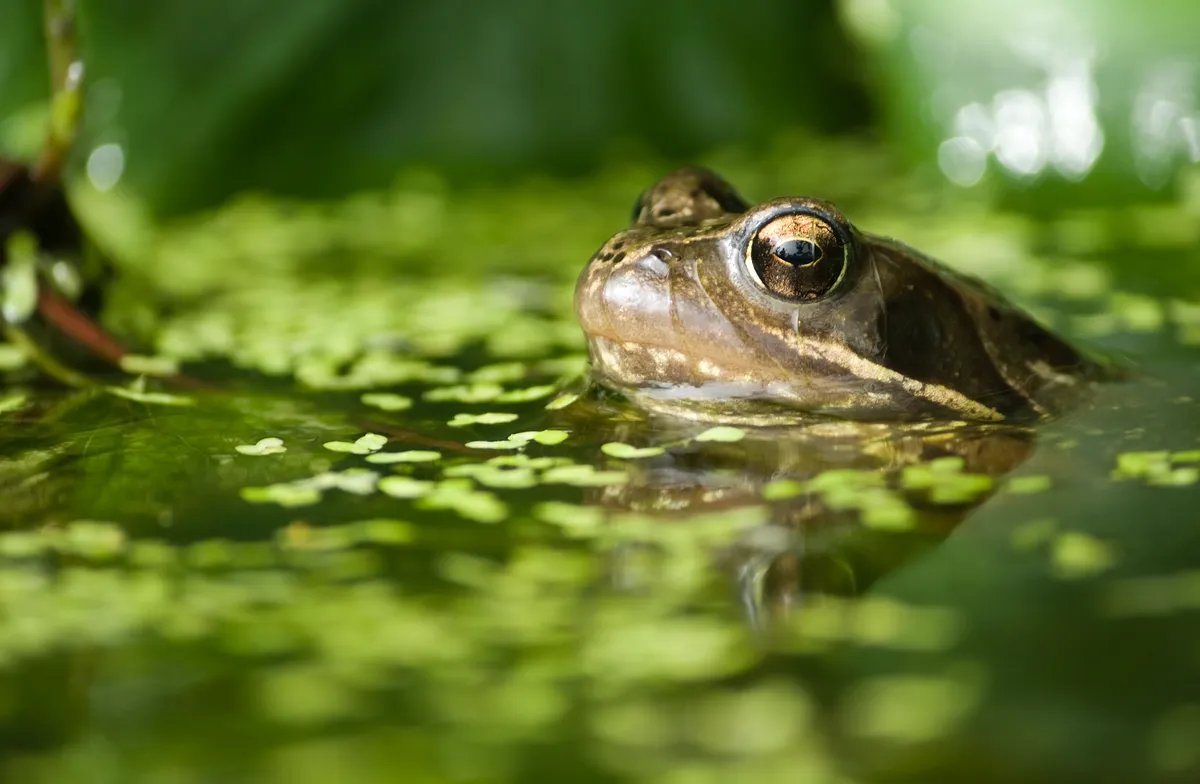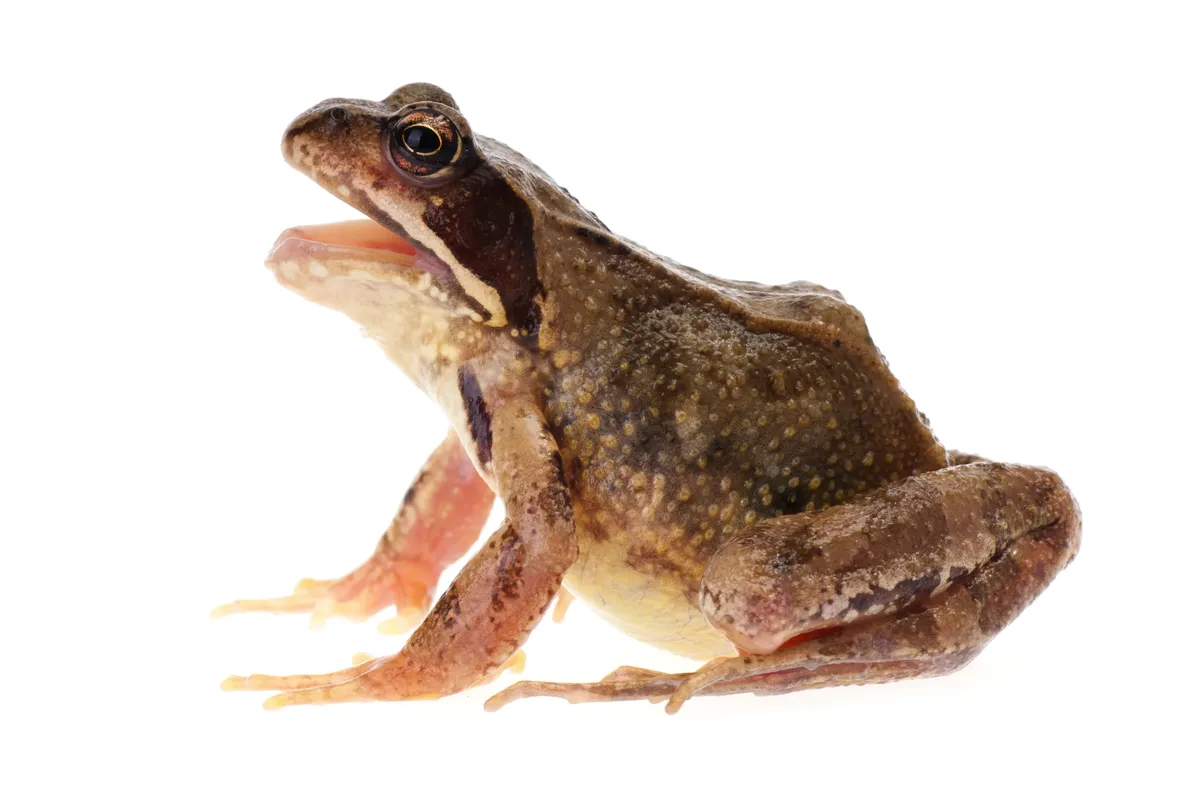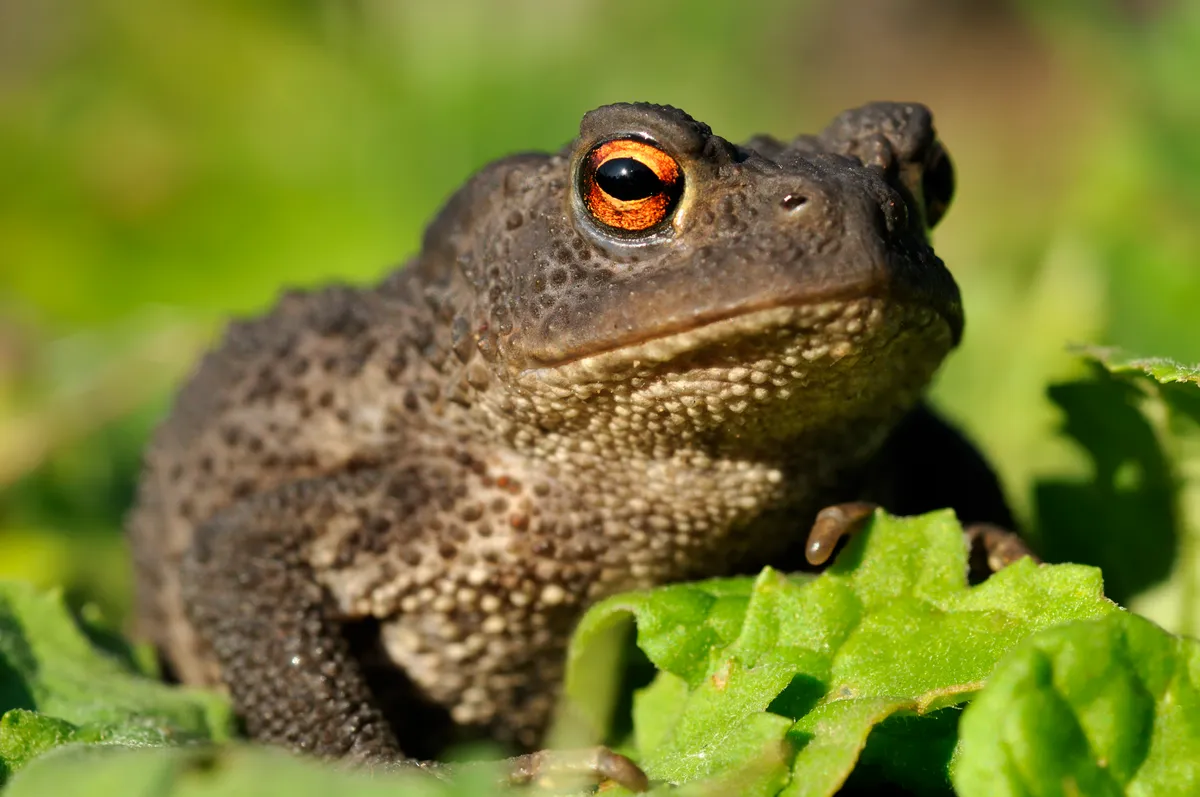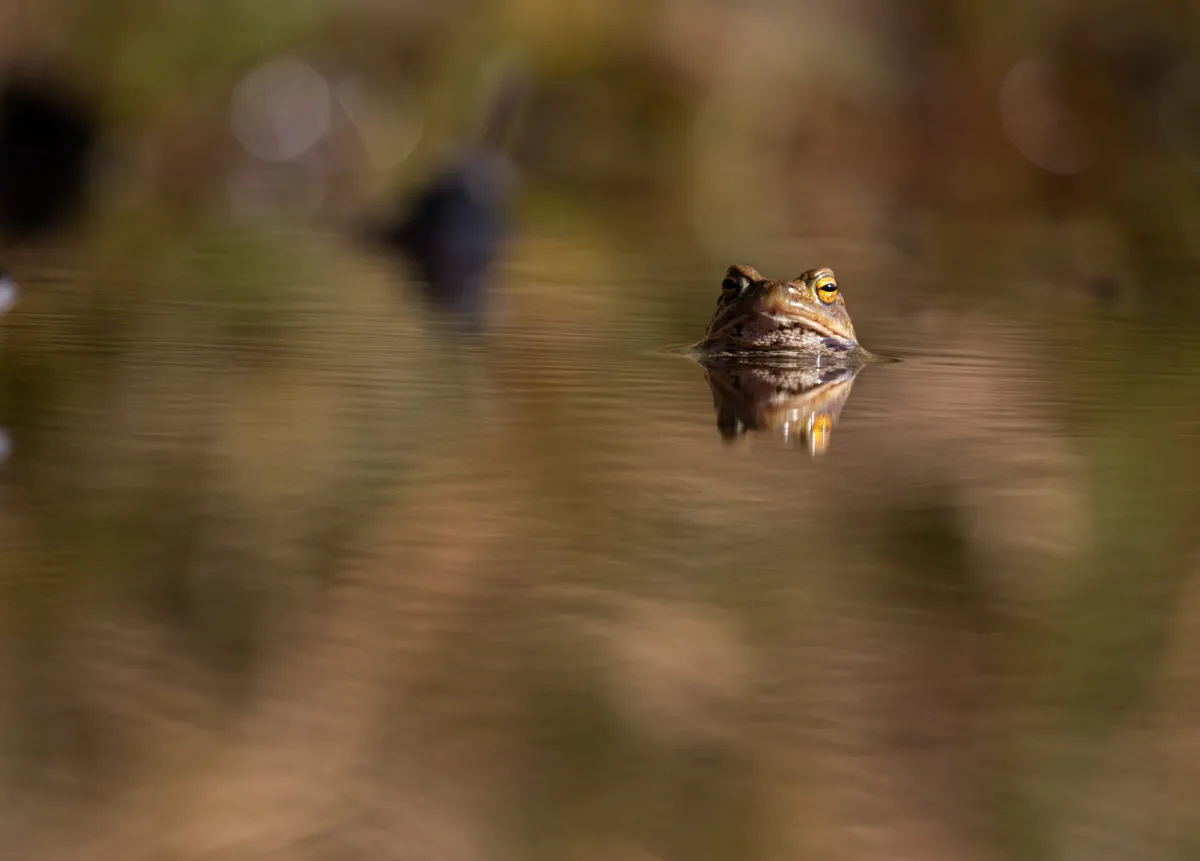In early spring, both frogs and toads spawn in shallow water, but at other times, either may be found away from ponds, in long grass or sheltering under stones and logs.
Both tend to be more active at night and avoid sunshine.
Toads can cope better with dry conditions, whereas frogs are rarely seen away from damp areas.
How to identify the common frog
Scientific name: Rana temporaria

Skin: Smooth and moist. Their skin is thin and used for respiration. It loses water easily, so frogs need to stay in damp places.
Colour: Highly variable – anything from olive-yellow to grey-brown
Nose: Pointed
Hindlegs: Longer than head and body
Shape: A sleek, athletic-looking creature

How does it move? Often jumps and rarely crawls; its leap can be longer than its body length.
Is it poisonous? No. Many predators eat frogs – foxes, owls, herons and polecats, to name but a few.
Where is it found? All over mainland Britain and Ireland, though scarce or absent in mountains. They are common in gardens, but scarcer in the countryside due to pesticides and land drainage.
Plus: Takes about three years to reach full adult size.
Learn more about frogs in the UK:
How to identify the common toad
Scientific name: Bufo bufo

Nose: Rounded, almost semi-circular
Markings: No dark streak behind eye
Colour: Varies from olive-brown to green
Skin: Warty and dry. Their skin is more waterproof than frogs’, so toads can survive in drier places.

Shape: Rather dumpy and not athletic
Hindlegs: Shorter than head and body
How does it move? Usually crawls. If it jumps at all, it will be less than the length of its body.
Is it poisonous? Yes. Prominent raised glands on its shoulders and neck exude a mild poison, while skin glands are distasteful to predators.
Where is it found? All over mainland Britain, but not in Ireland or mountains. Common in gardens and countryside, including woodland. Found up to 2km from nearest breeding pond. Presence of fish in ponds does not deter them.

Learn more about toads in the UK:
Main image: Common frog. © Mike Lane/Getty